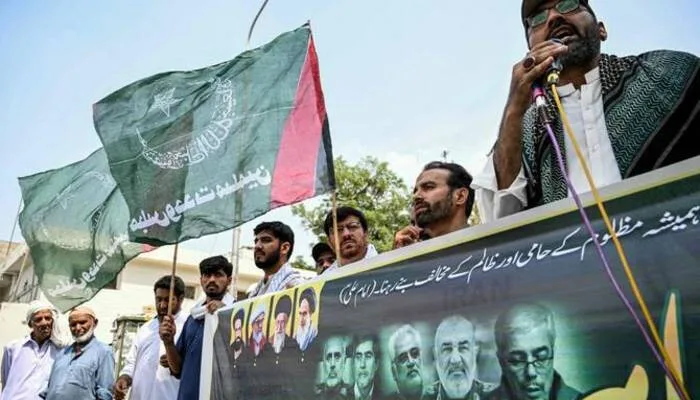As tensions between Iran and Israel escalate to unprecedented levels, a new front has opened — this time targeting Iran’s economic lifeline: its oil and gas infrastructure. In a dramatic escalation, Israel has launched airstrikes on some of Iran’s most vital energy facilities, triggering fears of a broader regional war and severe global energy disruptions.
The First Direct Strike on Iran’s Energy Assets
Late Saturday, Iran’s Ministry of Petroleum confirmed Israeli strikes on the Shahran fuel depot and Tehran’s Shahr Rey oil refinery, two key pillars of the country’s domestic energy distribution system. Emergency crews battled raging fires as smoke engulfed large parts of Tehran. The flames lit up the skyline on both ends of the city — the northwest and the south — underscoring the coordinated nature of the attacks.
More alarmingly, Israel also targeted the South Pars gasfield, the world’s largest natural gas reserve, located off Iran’s southern coast in Bushehr province. This field, shared with Qatar (where it’s called the North Field), provides over two-thirds of Iran’s domestic gas. Reports from Tasnim News Agency said Phase 14 of the field’s gas processing unit was severely damaged, and production from a major offshore platform generating 12 million cubic metres per day was halted.
In a separate strike, Israel also hit the Fajr Jam gas plant, another major facility connected to South Pars, further deepening the blow to Iran’s energy sector. The Petroleum Ministry confirmed all three strikes.
Why These Sites Matter
The Shahran oil depot plays a critical role in Tehran’s energy grid. With 260 million litres of storage across 11 tanks, it fuels northern Tehran’s transportation and aviation needs. Its destruction would paralyze fuel delivery to a city already bracing for conflict.
Read: Trump Opposed Netanyahu’s Proposal to Target Ayatollah Khamenei
Meanwhile, the Tehran Oil Refinery, located in Shahr Rey, refines nearly 225,000 barrels of crude oil per day. It supplies fuel to Iran’s most populated and economically vital regions. Even if the facility wasn’t directly struck, the fire at its periphery poses serious risks to its operations and infrastructure.
The South Pars gasfield holds a staggering 1,260 trillion cubic feet of recoverable gas — roughly 20% of the world’s known reserves. It’s Iran’s beating energy heart. Any disruption here has a cascading impact on the country’s power generation, industrial output, and residential consumption. The hit to Fajr Jam further compounds this, risking massive blackouts in Iran’s southern and central provinces, with economic losses estimated at $250 million a day from power outages.
Global Impact Looms
These strikes have not only lit up Iranian skies but also sent tremors through global markets. Crude oil prices jumped 9% following the initial Israeli attacks. With fresh reports of Iranian refineries and gasfields under siege, analysts warn that prices could soar when markets reopen.
Even more concerning, Iran has hinted at closing the Strait of Hormuz, a chokepoint for nearly 20% of global oil shipments. The U.S. Energy Information Administration calls it “the world’s most important oil transit chokepoint.” A closure, or even the credible threat of one, would spark global panic and potentially trigger a global energy crisis.
Alan Eyre, a fellow at the Middle East Institute, explained to Al Jazeera, “Israel is not just defending itself; it’s playing an aggressive, destabilizing game — trying to push the U.S. and its allies into deeper conflict.” With the stakes now involving the global oil supply chain, energy markets are watching this conflict with growing alarm.
Why Israel Changed Course
Until now, Israel had carefully avoided striking Iran’s energy infrastructure. The reason? Pressure from its Western allies, especially the United States, who feared the economic blowback of disrupting the oil market. But that restraint appears to have ended.
Israel’s Defense Minister Israel Katz warned on Friday, “If Iran retaliates, Tehran will burn.” That threat, seen as hyperbole, has become policy.
This marks a fundamental strategic shift in Israel’s approach — from covert cyber and military operations targeting Iranian nuclear and military assets to overt strikes on economic infrastructure. The Israeli leadership seems convinced that directly attacking Iran’s energy system will deal a crippling blow to the regime’s finances and public morale.
This is not just about revenge or deterrence. It’s a calculated attempt to pressure Iran into submission, or possibly, to spark internal upheaval by hitting the Iranian economy where it hurts most — its fuel supply.
A Global Powder Keg with No Off-Ramp in Sight
What’s next?
Tehran has already begun retaliating. Its drone and missile barrage has killed 10 Israelis and injured over 180. Iran’s state media reports 80 deaths, including 20 children, on its side following Israeli attacks.
Iran’s leadership has vowed more strikes if the assaults continue. But unlike Israel, Iran lacks the long-range precision strike capability to truly cripple its enemy’s infrastructure — especially as Israel’s missile defense systems have intercepted many attacks.
This asymmetry raises the specter of prolonged conflict — a war of attrition, where both sides trade blows, but neither backs down. And with each new strike, the chance of dragging in other players — Hezbollah, the United States, Gulf states — becomes more likely.
The United Nations has called for de-escalation, but Israel seems unwilling to heed international pleas. And Iran, facing mounting internal pressure, cannot afford to appear weak.
This new chapter in the Iran-Israel rivalry is not just a regional flare-up — it is now a global flashpoint. If the tit-for-tat strikes continue, and if the Strait of Hormuz is blocked or even partially disrupted, the world could be plunged into an energy shock — with dire consequences for economies already struggling with inflation and political instability.
In the words of Alan Eyre, “Iran doesn’t have many friends left. Israel isn’t listening to anyone. And the world? It might be about to pay the price.”
Follow us on Facebook and Instagram
